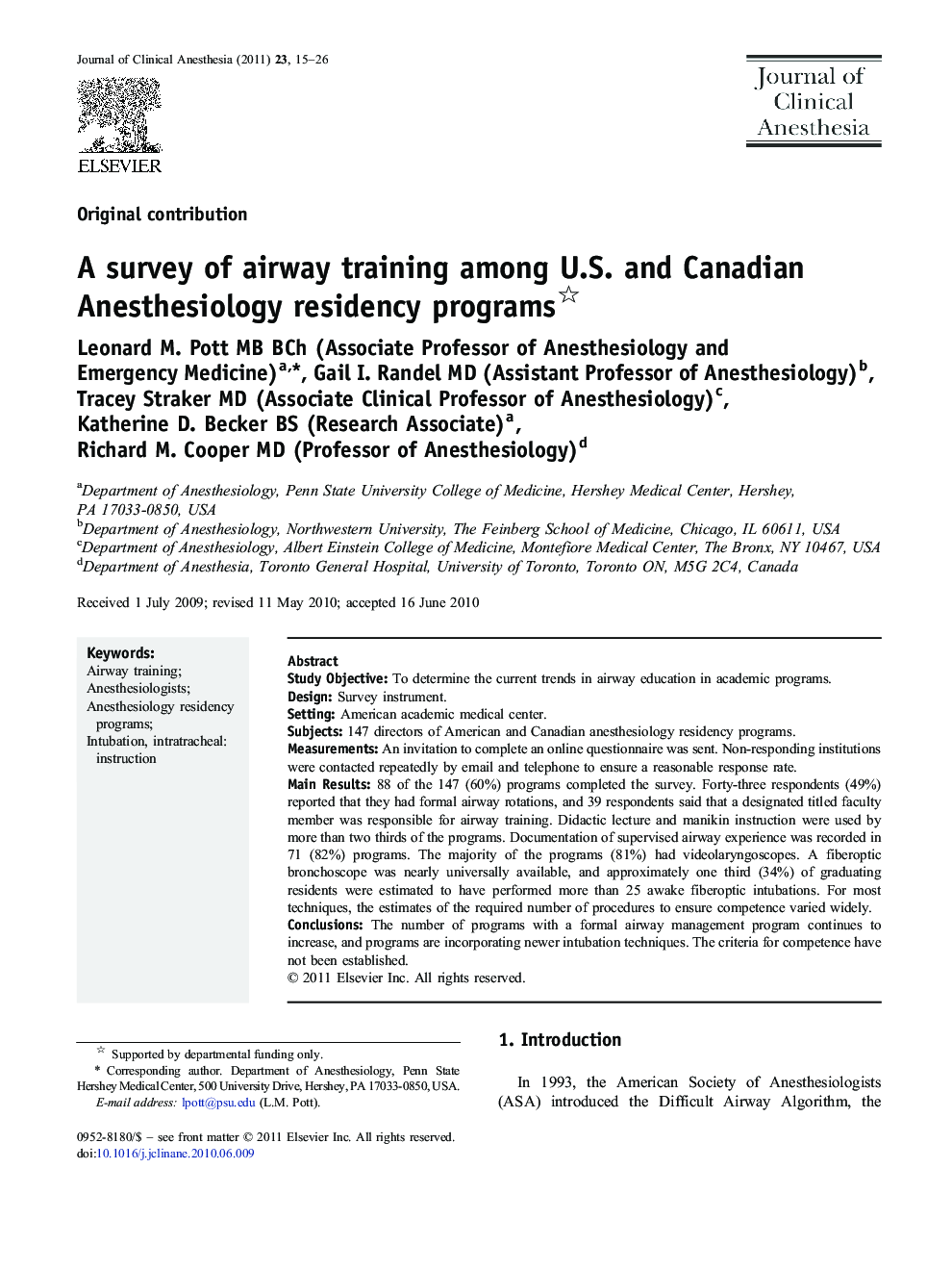| Article ID | Journal | Published Year | Pages | File Type |
|---|---|---|---|---|
| 2763601 | Journal of Clinical Anesthesia | 2011 | 12 Pages |
Study ObjectiveTo determine the current trends in airway education in academic programs.DesignSurvey instrument.SettingAmerican academic medical center.Subjects147 directors of American and Canadian anesthesiology residency programs.MeasurementsAn invitation to complete an online questionnaire was sent. Non-responding institutions were contacted repeatedly by email and telephone to ensure a reasonable response rate.Main Results88 of the 147 (60%) programs completed the survey. Forty-three respondents (49%) reported that they had formal airway rotations, and 39 respondents said that a designated titled faculty member was responsible for airway training. Didactic lecture and manikin instruction were used by more than two thirds of the programs. Documentation of supervised airway experience was recorded in 71 (82%) programs. The majority of the programs (81%) had videolaryngoscopes. A fiberoptic bronchoscope was nearly universally available, and approximately one third (34%) of graduating residents were estimated to have performed more than 25 awake fiberoptic intubations. For most techniques, the estimates of the required number of procedures to ensure competence varied widely.ConclusionsThe number of programs with a formal airway management program continues to increase, and programs are incorporating newer intubation techniques. The criteria for competence have not been established.
